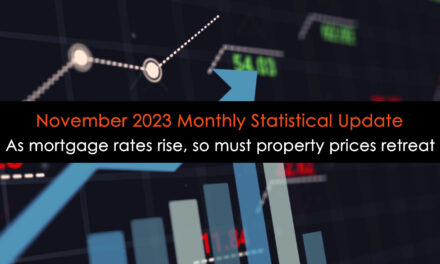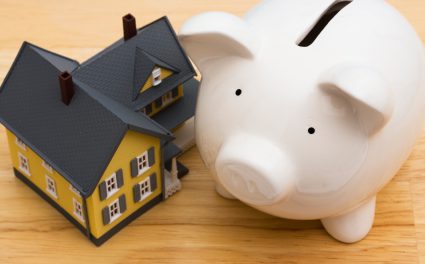The Federal Reserve is getting ready to increase the Federal Funds rate. What will happen to other interest rates, and to California’s housing market? For the answer, look to history.
The Fed’s toolbox contains: interest rates
The Federal Reserve’s (the Fed’s) main tool to control the economy is the Federal Funds rate. This is the rate charged on overnight funds lent to banks by the Fed. In turn, banks lend to businesses and consumers.
When the Federal Funds rate, or short-term rate, increases, banks are discouraged from borrowing as their cost of borrowing from the Fed increases. When the rate falls, banks are encouraged to borrow since it’s less expensive. In turn, banks are expected to lend more or less to the public based on the lower or higher rate.
Thus, the Fed influences the U.S. monetary supply and the dollars in consumers’ actual wallets.
As seen in the charts below, recessions (marked by the gray bars on the charts) coincide with decreases in the Federal Funds rate. Specifically, when the economy enters a recession, the Fed decreases the Federal Funds rate, making funds cheaper to borrow, for banks and their customers. This indirectly stabilizes the economy and ultimately lessens the depth of a recession.
On the opposite end of the cycle, before a recession occurs, the Fed causes the Federal Funds rate to gradually increase over a period of 24-36 months. This is one way the Fed attempts to maintain a lid on the boiling pot that is an over-heated economy — perceived in high rates of employment and upward moving inflation. If the pot boils over in economic excess, the recession that follows is long and hard — as most recently experienced in the Great Recession of 2008. This recession and recovery were the longest such events since the Great Depression, and no wonder since it followed the wild, untamed years of the Millennium Boom.
Finally, seven years after the start of the recession, the Fed is poised to lift the Federal Funds rate from its current level, which is today essentially zero. Fed chair, Janet Yellen, has indicated time and again they plan to increase the rate by the end of 2015. Thus, during each Federal Open Market Committee (FOMC) meeting in 2015, the press has held its breath, waiting for the announcement that the Fed thinks the economy has regained enough strength to withstand being taken off economic life support.
The Federal Funds rate and other interest rates
The Federal Funds rate indirectly influences the broader economy, and directly influences several rates which affect the price sellers receive.
The interest rate for 30-year fixed rate mortgages (FRMs) — the most common type of mortgage for buyer-occupants — move similarly but more gradually than the Federal Funds rate.
As seen in the chart above, the 30-year FRM rate rises with each increase in the Federal Funds rate. This occurred in 1994, 1999 and 2005-2006 (somewhat belatedly following the 1994 Federal Funds rate increase).
The Federal Funds rate has a more immediate effect on other short-term rates. For instance, many adjustable rate mortgage (ARM) indices are tied to Treasury bill rates directly influenced by the Federal Funds rate, like the 3-month Treasury bill.
Therefore, when the next interest rate increase occurs — read more on that here — expect ARM rates to adjust upward immediately and FRM rates to rise soon after, probably delayed by a few months for lack of inflation and plenty of global recessions to dampen the 10-year Treasury Note rate.
Home sales and the Federal Funds rate
Now that we understand how the Fed uses the Federal Funds rate to influence the broader economy and other interest rates, take a look at how the Fed rate interacts with home sales volume in California:
In the chart above, an adverse relationship is visible between the Federal Funds rate and home sales volume.
First, look at what happened to sales volume roughly 6-12 months following the 1994 interest rate increase (though not shown on this chart, the same reaction took place when the Fed raised rates in 1984). Home sales volume decreased throughout 1995, to pick up again in 1996.
The next time home sales volume faltered was also about 6-12 months following the increase in the Federal Funds rate, which began at the tail end of 1999.
Finally, the last time the Fed increased the Federal Funds rate was in 2004. Sales volume nosedived about 12 months later, in 2005. Pricing followed one year on, and the Millennium Boom came crashing down on an entire generation of what had been optimistic homeowners.
The Fed has kept the short-term rate at historic lows since 2009 — though well above the negative rate some economists have suggested to get the economy rolling. Meanwhile, home sales volume has bumped along from year to year (now eight years and counting) at a relatively constant pace of 400,000 to 450,000 sales annually.
What’s next for the housing market?
The Fed has indicated the Federal Funds rate will increase to around 0.5-1% at the end of 2015. In 2016, the rate will rise to about 1%-2%. In the following year, 2%-3%. The Fed will stage it in jumps as the economic data permits, not constant monthly increases of 0.25% as in the past several recoveries. The Fed expects the Federal Funds rate will then hover around 3% for some time:
Image courtesy Federal Reserve
In the image above, each dot represents a FOMC member’s projection of what the Federal Funds rate will be in the coming years, and in the longer run.
Thus, the volatile and descending Federal Funds rate of the past three decades is behind us for the next few decades.
When a patient first rises from their hospital bed (after having been there since 2007, as our economy has been), they don’t immediately start running marathons again. They take things slowly. And that’s exactly how the Fed envisions the economy for the next few years — the Federal Funds rate will rise gradually for the time being.
With a very fragile global economy and a domestic and local job market that has yet to catch up with population increases since the 2008 recession, interest rates won’t rise too quickly. Home sales volume will be stunted in the months following the initial rate increase by the Fed, but it won’t likely plunge back to 2008 levels.
Following home sales volume’s dip towards the end of 2016, home pricing will weaken within 12 months, likely in the second half of 2017. Any momentum from homebuyers returning to the market — as they are likely to do as job numbers continue to improve — will be stifled by rising mortgage rates.
However, give home sales a couple years to adjust to the new dynamic of rising interest rates, and the demographic push from returning homebuyers, first-time homebuyers and retiring Baby Boomers will vault the housing market into a mini boom at the end of this decade, likely around 2019-2021.


















Thank You ! Very informative….